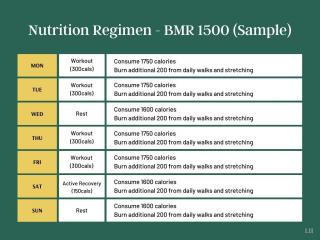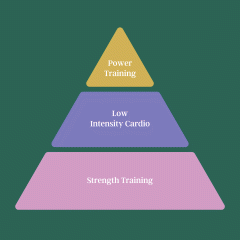True or False: “This sentence is false.”
What was your answer to the question above? Did you quickly fire off an answer or did you have to think about it and then think about it some more?
Imagine for a moment that you could put on a set of inverted goggles and see the world through an entirely different lens. On one hand, you would literally see differently, but you might not view the world differently. If we look deep enough and allow ourselves to observe from a new lens, we will. Thomas S. Kuhn remarked in The Structure of Scientific Revolutions,
“What a man sees depends upon what he looks at and also upon what his previous visual conceptual experience has taught him to see.”
The power of deep thinking is the essence of creativity. By learning how to think differently and deep, you will find that it is not only your creative thinking, but your critical thinking skills that vastly improve. This leads to higher levels of thinking and powerful problem-solving skills that you simply did not have before.
Let’s take a look at what deep thinking is, why you should learn about it, and what it will do for you.
How Do You Know That You Know the Stuff You Think You Know?
Have you heard the saying, the more you know the less you know? If you haven’t, take a moment and think about that phrase. By looking at the Theory of Knowledge, we can pose the following question: How do you know that you know the stuff you think you know?
Let’s look at an example. Solve the following: 2 + 2 = ?
I am hoping you answered 4! Yet, let’s take a look at another way to look at this. In Plato and Platypus Walk into a Bar by Thomas Cathcart and Daniel Klein, we find the following story.
A western anthropologist is told by a Voohooni that 2 + 2 = 5. The anthropologist asks him how he knows this. The tribesman says,
“By counting, of course. First, I tie two knots in a cord. Then I tie two knots in another cord. When I join the two cords together, I have five knots.”
Deep Thinking Is Thinking About Thinking
Rene Descartes famously stated, “Cogito ergo sum” or “I think, therefore I am” where he believed thinking as the essential characteristic of being human.
In Why the World Doesn’t Seem to Make Sense, Steve Hagen discussed that Descartes arrived at the cogito through an experiment in radical doubt to discover if there was anything he could be certain of; that is, anything that he could not doubt away. Hagen commented,
“He started out by doubting the existence of the external world. Then he tried doubting his own existence. But doubt as he would, he kept coming up against the fact that there was a doubter. Must be himself! He could not doubt his own doubting.”
Essentially, Metacognition is awareness of one’s awareness. It is thinking about thinking or cognition about cognition.
Meta means Beyond Cognition means ThinkingThus, Metacognition means Beyond Thinking.
To be aware, it refers to the ability of the mind to stand back and watch itself in action. Here, we are able to examine the way we learn, remember, and think. The knowledge of how we process information gives us the opportunity to change how we process it.
Can We Really Know What Anything Is?
Hagen poses the following question in his book Why the World Doesn’t Seem to Make Sense: Here it is, but what is it? Do we truly know what something is?
Hagen remarks,
When we try to answer this, have we merely answered the question “how do we conceive of it?” or “what do we call it?” Some deeper question remains.
For example, if I say, “Here, in this cup, is water,” you may ask, “What is water?” But as scientists we might wish to point out, “Water is hydrogen and oxygen.” Thus, by using scientific methods it seems we can discover what water is “made of.”
With confidence we say, “What is really in this cup is hydrogen and oxygen, combined and transformed into this unique substance we call ‘water’.” But the questions continue.
Hagen concludes, “What is hydrogen? What is oxygen? And so we look again, using scientific methods, and say, “Hydrogen is an element made of atoms, each consisting of a single proton and a single electron.”
But still the questions remain: what are atoms? What are protons and electrons? It seems that we’ve started on a never-ending regression. At no time do we ever really get to the other end of the question: “What is water?” We can name the mind object, even break it down and name its parts, but we still don’t really answer the question.”
Reading this passage leaves me to ask myself: can we ever really know what anything is? Let’s look at another example from Hagen.
He illustrates just how strange our world is through the conversation between a physicist and a philosopher:
Physicist: …and so we conclude an electron is a particle.
Philosopher: But you also claim an electron is a wave.
Physicist: Yes, it’s also a wave.
Philosopher: But surely, not if it’s a particle.
Physicist: We say it’s both wave and particle.
Philosopher: But that’s a contradiction, obviously.
Physicist: Are you then saying it’s neither wave nor particle?
Philosopher: No, I’m asking what you mean by “it.”
A Gap in the Stream of Consciousness
You might be wondering what the difference is between Metacognition and Cognition.
Cognition. This is the process of acquiring knowledge for understanding. Cognition is thinking. Metacognition. This relies on awareness and control of cognitive processes. Metacognition will help you find gaps in your learning and thinking. However, you must have acquired some previous knowledge about a topic prior to Metacognition. As mentioned earlier, Metacognition goes beyond just thinking… it is thinking about thinking.Now that you have an understanding of the fundamental principle behind deep thinking, let’s take a look at how to develop it.
In the book The Power of Now by Eckhart Tolle, we learn the following lessons.
Constantly Observe Your Mind Without Judging Your Thoughts
Here we should ask one simple question, “What will my next thought be?” Try it. Can you think of your next thought? Probably not.
By continually asking this question, you can delay the arrival of your next thought. This is due to what is called the quantum zeno effect, where we can freeze our current state by observing it. Essentially, there can be no change while you are watching it.
Life Is Simply a Series of Present Moments
Here we are informed that the past is simply all the present moments that have gone by. Tolle posits that the only important time is the present, for which we think about the least. Furthermore, the present is simply future present moments waiting to go by.
Imagine leaving your body and watching yourself think. Think of this as a mental movie where your goal is not to judge the actors, but to simply observe them.
Tolle refers to entering into the Now or the Present as creating a gap in the stream of mind. Asking yourself the question “What will my next thought be?” creates that gap and allows you to dis-identify from your mind. Once you do this, you have elevated yourself above thought. This is Enlightenment.
Stages of Deep Thinking
Before we look at strategies you can use to become a deep thinker, let’s briefly look at the stages of deep thinking known as the Three Levels of Thought.
Level 1: Lower Order Thinking. The individual is not reflective, has a low to mixed skill level, and relies solely on gut intuition. Level 2: Higher Order Thinking. The individual is selective on what to reflect on, has a high skill level, yet lacks critical thinking vocabulary. Level 3: Highest Order Thinking. The individual is explicitly reflective, has the highest skill level, and routinely uses critical thinking tools.Strategies to Become a Deep Thinker
To enter into the Highest Order Thinking, try the following strategies.
Increase Self-Awareness by Thinking About Thinking
Imagine you could become aware of how you learn. We know that we must have a baseline of previous knowledge about something to use Metacognition. Think of your Intelligence as what you think and Metacognition as how you think. Let’s look at a series of questions you can ask yourself by using the Elements of Thought.
Purpose. What am I trying to accomplish? Questions: What question am I raising or addressing? Am I considering the complexities in the question? Information: What information am I using to get to my conclusion. Inferences: How did I reach this conclusion? Is there another way to interpret the information? Concepts: What is the main idea? Can I explain this idea? Assumptions: What am I taking for granted? Implications: If someone accepted my position, what would the implications be? Points of View. From what point of view am I looking at this issue? Is there another point of view I should consider?Challenge Current Learning Methods Through Meta-Questions
Meta-Questioning is higher order questions we can use to explore ideas and problems. Here are some examples.
Why did it happen? Why was it true? How does X relate to Y? Why is reasoning based on X instead of Y? Are there other possibilities?Let’s look at a practical example.
When you say: “I can’t do this.” Change this to: “What specifically can I not do?” You say: “I can’t exercise.” Then ask: “What is stopping me?” You say: “I don’t have time.” Now ask yourself: “What needs to happen for me to start exercising?” You discover: “What time wasters can I eliminate in order to create more time to exercise?” Then imagine how you could start exercising: “If I could exercise, how would I do it?”View the World Through Different Lens
Here is a technique you can use to foster a deeper understanding of a problem—Four Ways of Seeing:
How does X view itself? How does Y view itself? How does X view Y? How does Y view X?
Try to apply the technique like this: suppose we are in the United States looking at a foreign country. First, draw four boxes, then list the questions. Second, start answering the questions.
In box #1 ask: “How do we see the United States?” Box #2: “How does China see themselves?” Box #3: “How does China see the United States?” Box #4: “How do you see them?”Thought Experiments
One last technique you can use to become a deep thinker —Thought Experiments. This is a device of the imagination used to investigate the nature of just about anything. Thought Experiments seek to learn about reality through thinking:
Visualize a situation and set it up in your imagination. Let it run or carry out some type of operation. See what happens. Draw a conclusion.The team at Stanford describes this using the following example: Since the time of Lucretius, we’ve learned how to conceptualize space so that it is both finite and unbounded. Let’s see how this Thought Experiment can work.
Imagine a circle, which is a one-dimensional space. As we move around, there is no edge, but it is nevertheless finite. What can you conclude? The universe might be a three-dimensional version of this topology.Think Deep, and You Will Think Creatively
Thinking deep will change how you think, feel, and view the world. When you understand this concept, you will start to think beyond simple beliefs.
“When the root is Deep… There is no reason to fear the wind.”
Deep Thinking will change how you think, feel, and view the world. When you understand this concept, you will start to think beyond simple beliefs.
By applying all the skills mentioned in this article, you will be able to think deeper and explore more possibilities.
Featured photo credit: Stocksnap via stocksnap.io





























































